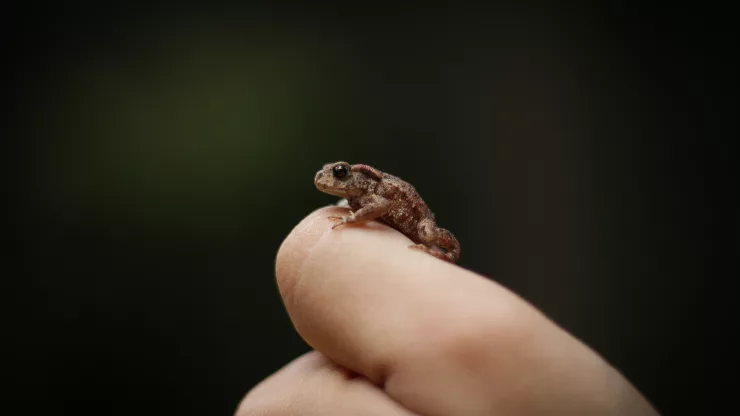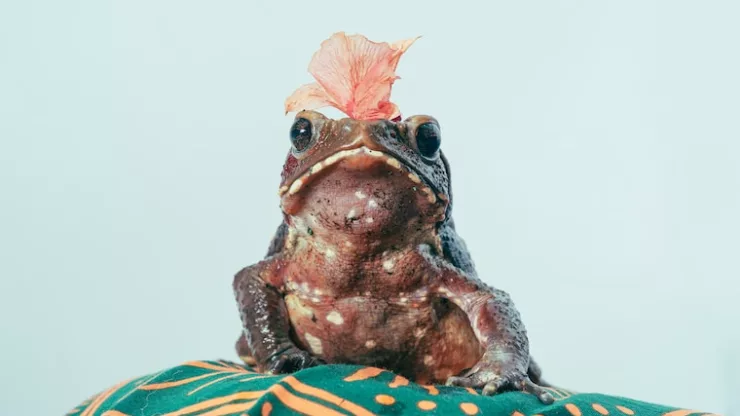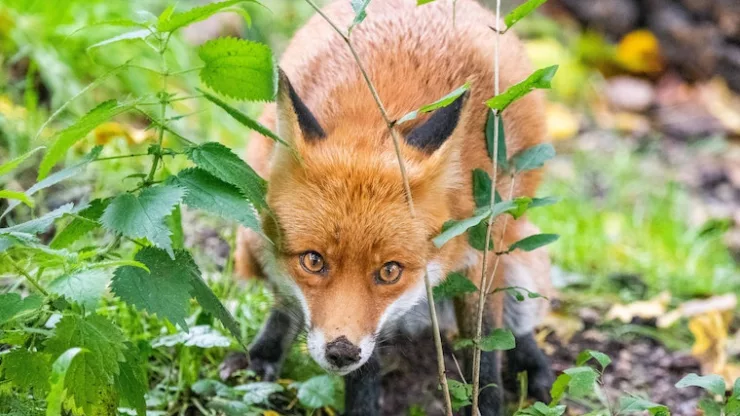As cities continue to expand, natural habitats have been replaced by concrete, buildings, and roads.
However, some animals have found a way to adapt and thrive in these urban environments.
One such group of animals is urban frogs, which have managed to survive in the ponds and streams scattered throughout cities.
Jump to Section
Introduction
Frogs are important indicators of environmental health and biodiversity.
They play a crucial role in ecosystems by controlling insect populations, serving as a source of food for predators, and providing ecological services such as nutrient cycling.
However, habitat loss and degradation due to urbanization have threatened the survival of many frog species across the world.
The Importance of Studying Urban Frogs
Studying urban frogs can provide valuable insights into the effects of urbanization on ecosystems.
It can also aid in the development of conservation strategies for urban wildlife.
Urban frogs are particularly interesting because they have adapted to the harsh conditions of urban environments, which could potentially offer new opportunities for conservation efforts.
Urbanization and Its Effects on Frog Habitats
How Urbanization Has Altered Frog Habitats
Urbanization has had a significant impact on frog habitats.
The construction of buildings, roads, and other infrastructure has led to the destruction of natural habitats, fragmentation of ecosystems, and pollution of water sources.
Urbanization has also resulted in an increase in temperature, noise, and light pollution, which can negatively affect frog behavior, reproduction, and survival.
The Impact of Urbanization on Frog Populations
The effects of urbanization on frog populations vary depending on the species and the urban environment.
Some species have shown population declines, while others have managed to thrive in urban environments.
Factors such as habitat availability, water quality, and the presence of predators can all influence frog populations in urban areas.
Urban Frogs: Survivors in Urban Ponds and Streams
The Adaptations of Urban Frogs
Urban frogs have developed adaptations to survive in the harsh conditions of urban environments.
For example, some species have shorter breeding seasons, faster growth rates, and a tolerance for polluted water.
Others have adapted to the presence of predators by changing their behavior and avoiding high-risk areas.
The Resilience of Urban Frog Populations
Despite the challenges posed by urbanization, some frog populations have managed to persist in urban areas.
Studies have shown that urban ponds and streams can provide suitable habitats for some frog species.
In some cases, urbanization may even create new habitats for frogs, such as abandoned swimming pools or retention ponds.
The Role of Urban Ponds and Streams in Frog Survival
The Importance of Urban Water Sources for Frogs
Urban ponds and streams are crucial for the survival of urban frog populations. They provide breeding and foraging habitats, as well as a source of water for survival.
Urban water sources also help to mitigate the effects of urbanization by providing green spaces and maintaining ecological connectivity.
The Threats to Urban Water Sources and Their Impact on Frogs
However, urban water sources are under threat from pollution, development, and climate change. Pollution from urban runoff can negatively affect water quality and harm frog populations.
Development can lead to the destruction of natural habitats and the loss of important breeding sites.
Climate change can alter water availability and quality, which can further impact frog populations.
Conservation Efforts for Urban Frogs
Strategies for Protecting Urban Frog Populations
Conservation efforts for urban frogs can include habitat restoration, water quality improvement, predator control, and public outreach and education.
Habitat restoration can involve the creation of new ponds or the restoration of degraded habitats.
Water quality improvement can involve reducing pollution from runoff and treating pollutants before they enter urban water sources.
Predator control can involve the removal of non-native predators or the creation of predator-free zones.
Public outreach and education can help to raise awareness about the importance of urban wildlife and the ways in which individuals can help to protect it.
The Success and Challenges of Urban Frog Conservation Projects
Conservation projects for urban frogs have had varying levels of success.
Some have resulted in the recovery of declining populations, while others have faced challenges such as funding, public opposition, and the difficulty of managing urban habitats.
However, conservation efforts for urban frogs are crucial for maintaining ecological diversity and promoting sustainable urban development.
The Future of Urban Frogs: Opportunities and Challenges
The future of urban frogs is uncertain, but there are opportunities for their conservation and protection.
The increasing interest in urban ecology and the development of new technologies for habitat restoration and pollution control can offer new solutions for urban frog conservation.
However, urbanization and climate change will continue to pose challenges for urban frog populations.
FAQ
What are some common urban frog species?
Common urban frog species include the American bullfrog, green frog, leopard frog, and spring peeper.
What are some threats to urban frog populations?
Threats to urban frog populations include habitat loss and degradation, water pollution, predation, and climate change.
How can individuals help to protect urban frog populations?
Individuals can help to protect urban frog populations by reducing their use of pesticides and fertilizers, supporting habitat restoration projects, and reporting sightings of frogs and other wildlife to local conservation organizations.
What are some conservation strategies for urban frogs?
Conservation strategies for urban frogs can include habitat restoration, water quality improvement, predator control, and public outreach and education.
What role do urban ponds and streams play in frog survival?
Urban ponds and streams provide crucial habitats for urban frog populations, including breeding and foraging sites, and a source of water for survival.
What are some challenges facing urban frog conservation projects?
Challenges facing urban frog conservation projects can include funding, public opposition, and the difficulty of managing urban habitats.
I’m a nature enthusiast and creator of Metro Wilds and have spent years exploring the great outdoors.
With a passion for environmental conservation and sustainability, I have dedicated my career to writing about the beauty and wonders of nature, as well as the threats facing our planet.
Contact me at [email protected] for assistance.





